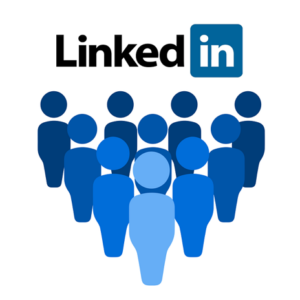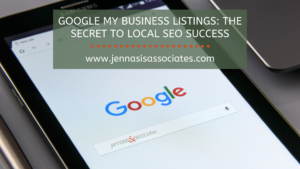Despite being a popular social media platform, many people remain puzzled by the purpose of LinkedIn and how they can benefit from using it.
In short, LinkedIn is a professional networking site that allows millions to exchange ideas and explore employment opportunities on a secure platform. The massive international network includes over 500 million users of job seekers and recruiters alike. Roughly two new people join every second. With such a vast number of members and a network vastly growing by the second, how can you best utilize LinkedIn to get noticed in the business world?
1. Complete your profile.
Your LinkedIn profile is comprised of several key sections: Headline, Summary, Skills, Experience, Education, Volunteer Experience, Certifications, Honors & Awards. You are free to input as few or as many details you’d like; however, since your LinkedIn profile essentially functions as your online resume, you want to be as thorough as possible to communicate your expertise to potential clients, customers, and employers. LinkedIn users who reach the “All-Star” level of profile completeness are 40 times more likely to receive opportunities through the LinkedIn platform. Having a robust profile that showcases your brand and your know-how is key to getting attention.
2. Use professional pictures.
You may love that funny photo of you hosting your cat’s birthday party, but the professional atmosphere of LinkedIn does not look favorably on casual social media pictures. These are better suited for personal platforms (think Facebook or Snapchat!). When selecting a profile picture, make sure the image passes a few tests before uploading: 1) The image is professional, most likely a headshot (not to be confused with a selfie!) 2) It should be recent, look like you, and indicate how you’d dress for work. 3) The background shouldn’t be distracting. 4) You should look natural and approachable. 5) For your personal page, the image should always be a photo of you, not a brand logo. For consistency of branding, it’s recommended you use this image across your professional social media platforms.
3. Create a customized URL.
When you sign up for LinkedIn, you’ll automatically be assigned a URL. Unfortunately, that URL will most likely include a long series of numbers and letters that looks more like a robot language than a clear online identity. Once your LinkedIn account is active, you can easily create a new URL that clearly identifies who you are. Utilizing the customized URL option allows you to generate a recognizable and memorable profile link. This link will also be easier to fit on business cards, email signatures, and resumes. Using your name as it appears in your profile is highly recommended!
4. Include keywords for Search Engine Optimization.
With so many sections available on LinkedIn, you have ample opportunity to incorporate industry-related keywords in your profile. From your customized URL, your job titles and your descriptions, constructing a keyword-rich profile increases the opportunity of your profile appearing in search engine results, thus increasing visibility by potential clients and employers. On the other hand, you want to avoid overstuffing your profile with so many duplicate keywords that it becomes unbearable to read! Focus on utilizing several different, yet relevant keywords, and strategically use them throughout the length of your profile.
5. Get recommendations.
Like references on a resume, recommendations on LinkedIn are an opportunity for a third party to express your value. When a potential client, or hiring manager, reviews your LinkedIn profile, recommendations can show you’ve impressed others with your work and/or brand. Take the time to ask past clients and employers to write recommendations that help support your professional brand. In a similar vein, third parties can also endorse the skills you list in your profile Skills section. After adding your skills (up to a 50), your connections can endorse them. This results in ranking your skills per their number of endorsements. This feature is another way for others to perceive your strengths and understand how you may fulfill their needs or fit within their organization.
6. Publish your own content.
It may sound daunting or time-consuming, especially if writing isn’t your strong suit, but publishing your own content on the LinkedIn platform is another means of supporting your personal messaging and getting yourself publicized. By publishing your own content, you can showcase more of your expertise and competencies in your specified field. Whether you want to create articles about industry-related points of view, strategies, or philosophies, posting articles of your own creation can garner six times more views from people outside your immediate network. Once published, your work will appear in the newsfeeds of your connections. Your most recent publications will be showcased on your public profile, allowing your expertise to expand its reach. Also, anyone who likes, shares, or comments on your articles has introduced your work to their own networks.
7. Participate in groups.
Another element that is extremely beneficial is regular participation in LinkedIn groups. Find groups related to your field or interests, and regularly contribute your knowledge through conversations and content-sharing; participation in approximately 2 to 3 groups is a good starting point. According to LinkedIn, if you are an active member of a group, your profile is five times more likely to be viewed. Another plus is that only 16% of LinkedIn members are in the maximum number of groups allowed (which is 50); so, if you have the availability to increase your group participation, you could have an edge over those in your industry who haven’t extended their presence throughout 50 groups. If you don’t have the availability to participate in LinkedIn groups to share your own content, consider employing a content manager who can.
8. Post regular updates.
Posting regular status updates, as well as commenting on the statuses of your connections, not only shows you’re an active member of the LinkedIn community, but also allows you to widen your reach. Your activity is visible to your network and your contacts’ secondary network, so members who are not yet connected to you, have the ability to see what you can offer. It also shows you’re interested and invested in others by interacting at least several times a week. When you purposefully and continually make your presence known, you purposefully and continually keep yourself relevant to other people and companies.
9. Utilize SlideShare.
SlideShare is a presentation platform available that allows users to showcase files from PowerPoint, Keynote, PDF, or OpenDocument presentations. SlideShare has integrated with LinkedIn, allowing you to share important presentations and projects publically on your profile. This gives your expert materials the chance of getting noticed through LinkedIn, Google, or any specific SlideShare searches (which averages over 159 million monthly views.) This is a threefold opportunity to optimize your professional presence.
10. Connect, connect, connect.
According to the book Linked to Influence by Stephanie Sammons, the “LinkedIn network effect” is a powerful means of expanding your presence beyond your own connections. If one of your 1st degree connections engages with your status update, one of their connections can view this activity, and thus encounter you before you’re even connected. If the 2nd degree connection engages with your post, you’ve expanded your reach into their network as well, making your presence known to your 3rd degree connections. Your reach was just expanded by three degrees because of engagement with one 1st degree connection. By having 100, 200, or 500+ connections, the potential growth of your LinkedIn presence becomes virtually limitless.
Although the LinkedIn population is substantial, the ample ways to get noticed on the platform are still largely untapped by many of its members. By utilizing the 10 quick tips above to optimize your LinkedIn presence, you’ll set yourself up to be miles ahead of the competition.






